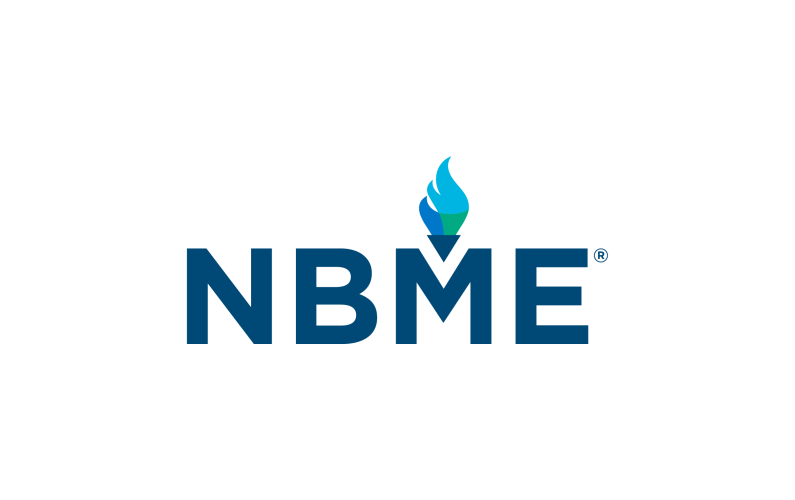My USMLE Journey: An Unconventional Path to Success

Embarking on the USMLE journey was a transformative experience that tested my resilience, adaptability, and determination. From discovering the exams in my fourth year of medical school to navigating an unconventional preparation strategy, this blog chronicles my path to conquering Step 2, Step 1, Step 3, and the OET—all within a whirlwind five-month exam window. Here’s how I did it, complete with study strategies, exam insights, and tips for test day.
Before we start I will write my stats for you.
Step1 : Passed (December 2024)
Step2 CK: 269 ( September 2024)
Step3: 266 ( February 2025)
Discovering the USMLE: A Late Start
In my fourth year of medical school, the term "USMLE" started popping up in conversations. Initially unaware of the U.S. residency pathway, I dove into research and realized this was the route I wanted to pursue. By the start of my final year, after discussions with my family about finances, I committed to the journey, planning to begin with Step 1 like most candidates.
However, advice from seniors revealed key differences between Step 1 and Step 2. Step 1 focused on foundational sciences—pathology, pharmacology, microbiology—while Step 2 emphasized practical clinical knowledge, covering medicine, surgery, pediatrics, and gynecology. Noticing the overlap between Step 2 and my final-year curriculum, I learned it was possible to take Step 2 before Step 1. Intrigued, I explored further and found success stories online of candidates who scored in the 250s using this approach. Inspired, I set an ambitious goal: to score above 260 on Step 2.
Choosing the Unconventional Route: Step 2 First
Confident in the overlap with my coursework, I decided to tackle Step 2 before Step 1—an unconventional but strategic choice. My preparation began on July 1, 2023, with a clear plan to build strong clinical foundations before diving into question banks.
Building Concepts with Sketchy
I’ve always loved Sketchy for its engaging, visual approach to learning. Having used it for microbiology, pharmacology, and pathology in my third and fourth years, I made it my primary lecture resource for Step 2. Throughout July and August, I focused on Sketchy videos for internal medicine, surgery, pediatrics, and gynecology.


My study method was dual-layered:
- Daily New Content: I watched new Sketchy videos each day to cover fresh topics.
- Spaced Repetition: I revisited previous videos daily, watching each sketch 7–8 times over two months.
By mid-September, I had memorized the entire Sketchy library for Step 2, creating a robust mental framework for clinical management.
For you, I recommend starting with any lecture source that works for you.
Mastering UWorld: A Game-Changer
In mid-September, I started UWorld, the gold standard for USMLE prep. To my surprise, my Sketchy foundation translated directly to the questions—disease management felt intuitive, and I scored above 80% on my initial blocks, far surpassing the typical 60–75% for beginners. This affirmed that my two months of Sketchy prep had given me a head start.
I tackled UWorld strategically:
- Block-Wise Approach: I completed 60% of questions in each subject (e.g., cardiology, infectious disease) to build depth.
- Mixed Format: The remaining 40% I solved in mixed blocks to simulate exam conditions.
Simultaneously, I created a custom Anki deck, not for flashcards but for detailed notes. I took screenshots of UWorld tables, diagrams, and explanations, tagging them by topic for easy retrieval. This deck became my personalized study tool.
Balancing Finals and Step Prep
By mid-November, I had completed UWorld for Step 2 and considered taking the exam in December 2023. However, friends advised delaying for a higher score, and my final exams loomed in February. From January 1, 2024, I paused Step prep to focus on finals but cleverly repurposed my UWorld notes for subjects like internal medicine and gynecology. This kept my Step 2 knowledge fresh while acing my finals.
Ramping Up: NBMEs, AMBOSS Step 2, and Step 3 UWorld
After finals ended in March 2024, I had three months before my internship to polish my Step 2 prep. I diversified my resources, incorporating AMBOSS and Step 3 UWorld questions to broaden my clinical exposure. By June, I had completed
- The entire AMBOSS question bank.
- 1,200 Step 3 UWorld questions.
Mastering NBMEs: A Structured Approach
Recognizing the importance of NBME practice exams, I dedicated ten weeks to ten assessments (NBMEs 8–14, three UWorld Self-Assessments, and one AMBOSS Self-Assessment). This weekly routine is recommended for you:
- Day 1: Take the exam in one sitting, mimicking test conditions.
- Days 2–4: Review explanations and note errors, categorizing them by block and topic. Always know why THAT question went wrong. Make sure it doesn't happen again.
This approach honed my timing, deepened my knowledge, and resolved recurring mistakes. My Anki deck grew to 11,000 detailed cards, though I prioritized high-yield notes over exhaustive review. Consistent scores above 260 boosted my confidence. Below are my practice scores, reflecting my progress:
- AMBOSS Online SA: 264 (2024)
- NBME 10: 272 (July 01, 2024)
- NBME 9: 273 (July 14, 2024)
- NBME 14: 265 (July 22, 2024)
- NBME 13: 264 (August 01, 2024)
- UWSA 3: 264 (August 09, 2024)
- NBME 11: 270 (August 16, 2024)
- NBME 12: 266 (August 23, 2024)
- IFOM CSE at Prometric: 276 (August 30, 2024)—100th percentile
- UWSA 1: 274 (September 2, 2024)
- UWSA 2: 276 (September 20, 2024)
Note: My high scores on NBME 9 and 10 resulted from solving them untimed to build confidence. From NBME 14 onward, I switched to timed mode, aligning with exam conditions, which slightly lowered but stabilized my scores around 264–276.
CMS Forms: A Limited Experience
Due to time constraints, I only completed the CMS Forms for Psychiatry and Gynecology (one or two blocks each). Since I didn’t have the opportunity to work through all available forms, I can’t definitively advocate for or against their use. Personally I think there are only 5-7 questions on each CMS block that are important. Rest are not so good.
Final Week Prep: Staying Sharp
The week before my Step 2 exam was critical. I focused on:
- Flowcharts: Revised UWorld and AMBOSS flowcharts for next-best-step questions.
- NBME Objectives: Reviewed educational objectives from NBMEs 8–14 (1,200 questions) for a comprehensive overview.
- USMLE Orientation: Completed the USMLE F120 orientation two days prior, scoring above 100/120—a predictor of a 260+ score.
- UWorld Self-Assessment: Took UWSA 2, scoring 276, aligning with my target.
Despite a kidney stone diagnosis in the final week, I pressed on, though the pain impacted my performance on test day, September 26, 2024.
Exam Day: Step 2 and Beyond
My Step 2 score exceeded expectations despite my illness, motivating me to book Step 1 for November 19, 2024. Post-exam, I underwent kidney stone surgery, followed by complications that confined me to bed for 25 days. I delayed Step 1 to December, leveraging my Step 2 foundation to streamline prep:
- UWorld for Step 1: Solved 160 questions daily, skipping familiar explanations.
- Sketchy: Reinforced biochemistry, pharmacology, and microbiology.
- Minimal Anki: Created a small deck for pathology images.
I passed Step 1 and immediately booked the OET in January 2025 to meet the ECFMG pathway deadline of January 31. Certified on the final day, I scheduled Step 3 for February 24–26, 2025, capitalizing on my recent prep. For Step 3:
- Reviewed 250–300 Anki cards daily.
- Solved 100 CCS cases, memorizing key steps rapidly.
Step 1
- Format: 7 blocks, 40 questions each, 8 hours total (1-hour break).
- Content: Pathology-heavy, with a mix of easy and challenging questions.
- Tip: Stick to UWorld, First Aid, Pathoma, and Sketchy for comprehensive prep.
Step 2
- Format: 8 blocks, 39–40 questions each, 9 hours total (1-hour break).
- Unique Features: Two blocks include research articles (3 questions each); sequential questions appear.
- Tip: Finish article blocks 10–15 minutes early to tackle lengthy texts. Solve sequential questions last to avoid mental carryover.
Step 3
- Day 1: 6 blocks, 38–39 questions each, 7 hours (45-minute break). Covers biostats, pharmacology, ethics, and drug ads/research articles. 4 drug ads and 2 research articles appear in total, one in each block.
- Day 2: 6 blocks (30 questions, 45 minutes each) + 13 CCS cases (7 at 20 minutes, 6 at 10 minutes), 9 hours (45-minute break).
- Tip: Memorize Step 2 material; master 100+ CCS cases. Day 2 resembles Step 2 but is tougher with more sequential questions. Remember to solve them at the end of the block; you dont want to keep thinking about THAT ONE wrong question the whole block.
- Week Before: Sleep from 10 PM to 6 AM to set your circadian rhythm.
- Day Before: Review screening guidelines, developmental milestones, and vaccinations. Stop studying by 5–6 PM.
- Test Day:
- Wake early, pray or meditate, and eat a light breakfast (no milk).
- Arrive 30 minutes early; scope out the test center.
- Bring snacks: dates, bananas, apples, protein bars, and Red Bull.
- Break Strategy: Solve 2 blocks, take a 10–15 minute break, and repeat. MUST track break times.
- Tech Hack: Copy your CID code to paste quickly, saving 10s per break.
- Dress light (shorts, t-shirt) for faster screening.
- ECFMG Registration: $160 USD
- Step 1: $1,220 USD
- Step 2 CK: $1,220 USD
- Step 3: $935 USD
- ECFMG Certification: $935 USD
- OET (Occupational English Test): $455 USD
USMLE Finances: Planning for CostsThe USMLE journey involves significant financial investment. Below are the approximate costs I incurred, though prices may have changed since 2024. Always check the official USMLE and ECFMG websites for current fees:Total Estimated Cost: $5000 USDThese figures exclude additional expenses like study resources (UWorld, AMBOSS, Sketchy subscriptions), travel to test centers, or accommodation. Discussing finances with my family early on was critical to budgeting effectively.
Reflections: Triumphs and Challenges
My USMLE journey spanned a year but culminated in a five-month exam sprint, defying my expectations. Scoring above my Step 2 goal despite a kidney stone, passing Step 1 and the OET, and conquering Step 3 showcased my adaptability.
For Step 2 aspirants, I recommend Sketchy, UWorld, and a custom Anki deck, paired with NBME practice. Step 3 hinges on CCS mastery and Step 2 revision. On test day, stay calm, manage time, and trust your prep.
This journey taught me that with strategy and resilience, even the unconventional path can lead to success. Best of luck to all future test-takers!





What about USCE??
ReplyDeleteHi! Thank you for your comment. I do have a pending task on my list to write a blog post on USCE. I will write one as soon as I get some time off my schedule. Thank you for your patience meanwhile !
DeleteThank YOU for reading !
ReplyDeleteDid u watcg sketchy videos for step 1 too?
ReplyDeleteThanks for your comment. I watched Sketchy Pharma, Micro, and Biochem for Step 1. That said, I had very little time to prepare for Step 1—less than a month, to be exact. I mainly relied on my MBBS and Step 2 knowledge rather than dedicated preparation.
DeleteThankyou for the detailed guidance
ReplyDeleteI'm happy you found my blog helpful!
DeleteThanks for the detailed explanation
ReplyDeleteYou are welcome, dear!
Deletewhat lectures did you watch for step 1 and please tell what it cost you in total
ReplyDeleteThanks for your comment. I watched Sketchy Pharma, Micro, and Biochem for Step 1, which I was fortunate enough to get for free from a colleague. That said, I had very little time to prepare for Step 1—less than a month, to be exact. I mainly relied on my MBBS and Step 2 knowledge rather than dedicated preparation.
Delete“Your writing style is clear and friendly, which makes the information more enjoyable to absorb. Looking forward to more posts like this.” Natural hematite
ReplyDelete